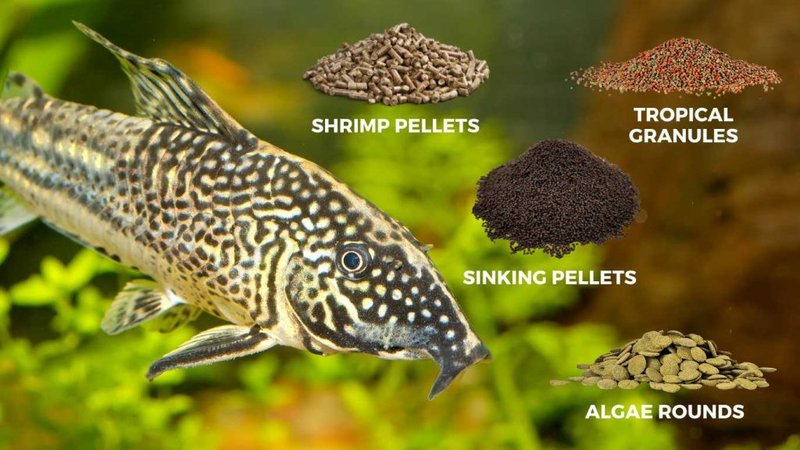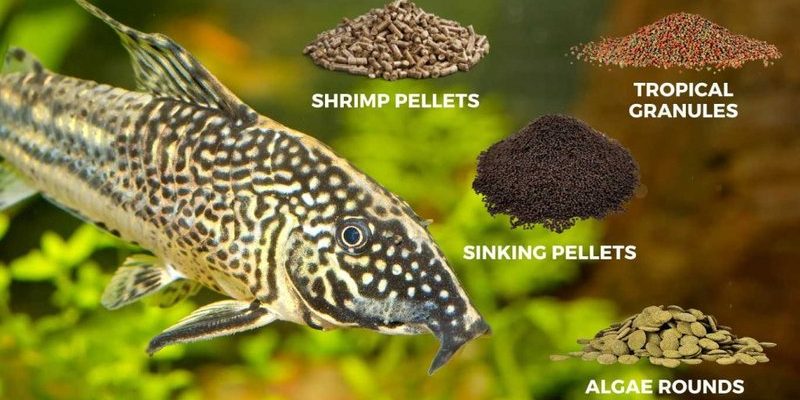
So, what should you feed these charming fish? Honestly, it’s not as complicated as it seems. Corydoras catfish are omnivores, which means they enjoy a varied diet that can include everything from pellets to vegetables. Let me explain what you need to know to ensure your Corydoras are happy, healthy, and well-fed.
Understanding the Diet of Corydoras Catfish
Corydoras catfish are pretty flexible eaters. In the wild, they consume a mix of plant matter, small insects, and tiny invertebrates. This natural diet means they do well with a variety of food options in your aquarium. So, when you’re deciding what to feed them, here are some key components to consider:
- Quality Fish Pellets: Look for sinking pellets specifically designed for catfish. These are often rich in protein and will float down to the bottom where Corydoras can easily access them.
- Frozen or Live Foods: Items like bloodworms, brine shrimp, and daphnia can be fantastic treats. Just ensure they’re of high quality to avoid introducing diseases.
- Vegetables: Blanched zucchini or cucumber provides essential fiber. Just cut it into small pieces and let them nibble away!
This mix ensures they get the nutrients they need to thrive, helping them stay active and vibrant in their habitat.
How Often Should You Feed Corydoras Catfish?
You might be wondering about the right feeding schedule for your Corydoras. Generally, it’s best to feed them once or twice a day, but here’s the catch: you should only give them what they can eat in about 2-3 minutes. Overfeeding can lead to poor water quality and health issues down the line.
Here’s a simple guide to help you keep track of feeding:
- Daily Feedings: Offer a small portion of sinking pellets each day.
- Twice a Week Treats: Give them some frozen or live food—a little goes a long way!
- Vegetable Snack: Include a piece of blanched veggie a few times a week to keep things interesting.
This routine not only keeps your fish happy but also makes it easier for you to maintain a clean tank.
The Importance of Variety in Their Diet
Here’s the thing: variety is key for your Corydoras catfish. Just like humans, these fish thrive on a diverse diet. Feeding them the same thing every day can lead to nutritional deficiencies. You wouldn’t want to eat plain rice for every meal, right?
By rotating their food, you’ll ensure they receive different vitamins and minerals. Think of it as serving a buffet. Each day can feature different options like:
- Pellets: Start with high-quality sinking pellets.
- Protein-Rich Treats: A couple of days with frozen/live food.
- Fruits and Veggies: Introduce options like peas and carrots occasionally.
This keeps their diet interesting and supports their overall health.
Common Feeding Mistakes to Avoid
While feeding your Corydoras can seem straightforward, there are some common mistakes that can lead to problems in your tank. Here’s what to watch out for:
- Overfeeding: This is probably the biggest issue. Too much food can pollute the water and harm your fish. Stick to the “2-3 minute rule” to avoid this.
- Ignoring Sinking Food: These catfish are bottom feeders, so make sure the food you provide sinks. Floating flakes often end up out of reach.
- Neglecting Vegetables: Skipping out on plant matter can neglect essential nutrients. Don’t forget to add blanched veggies!
If you steer clear of these pitfalls, your Corydoras will be happier and healthier.
How to Spot if Your Corydoras Are Healthy
Keeping an eye on your Corydoras’ health is vital. There are a few signs to look for that can indicate whether you’re feeding them well. Healthy Corydoras catfish should be active and social, often seen exploring and foraging. Here are some key points to consider:
- Color: Their colors should be vibrant. Faded or dull colors can be a sign of stress or illness.
- Behavior: Healthy catfish are usually curious. If they’re hiding excessively, something might be off.
- Body Condition: They should be plump but not overly bloated. A sunken or swollen belly can indicate dietary issues.
Regularly observing your fish can help you catch any problems early on.
Feeding Corydoras catfish isn’t just about putting food in the tank. It’s about understanding their needs and providing a balanced diet that mirrors their natural habits. By following a proper feeding schedule, ensuring variety, and avoiding common pitfalls, you’ll help these delightful fish thrive in your aquarium.
So, the next time you watch your Corydoras dart around the tank, you can feel good knowing you’re giving them the best possible care. Just like we all appreciate a good meal, your little aquatic friends will thank you for the nourishment you provide!

